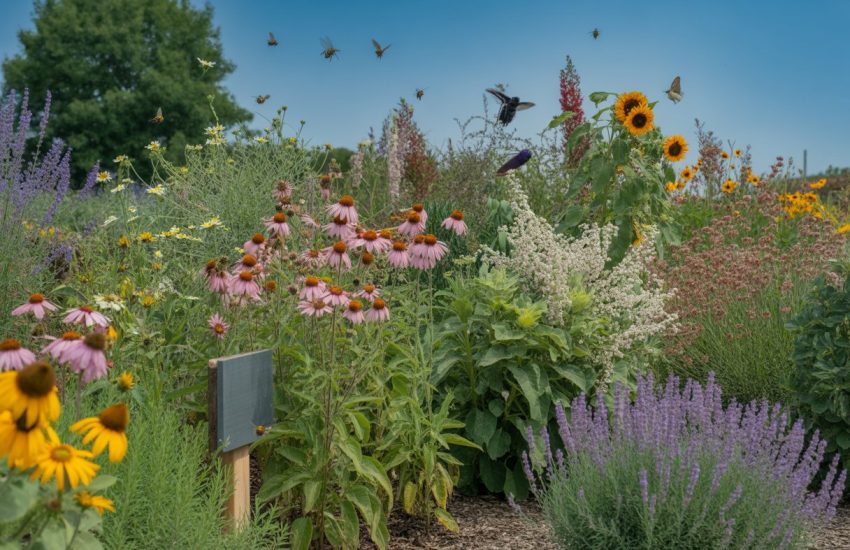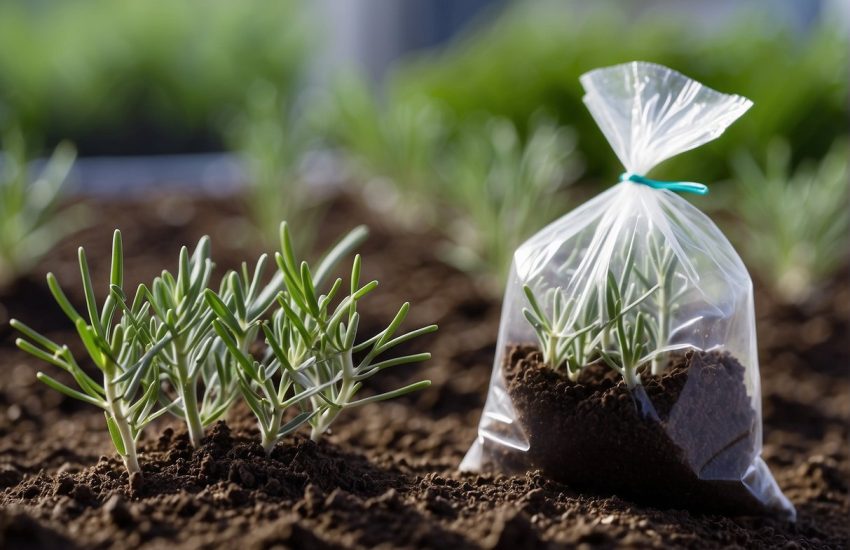Azalea Leaves Turning Yellow – Causes and Solutions
Azaleas (Rhododendron spp.) are a woody group of plants that usually bloom in the spring. The leaves of azaleas often turn colors from green to yellow a condition which is known as chlorosis. Yellow-colored leaves are a common cause for concern because it may be an indication of the death of the plant. It may also be an indicator that the plant is not getting enough nutrients from the soil or a symptom of a crucial underlying problem. As such leaves turning yellow should be a major cause of concern for any gardener.
Azalea Leaves Turn Yellow: Possible Causes & Solutions
There are many possible causes for azalea leaves turning yellow. Here are some of the common causes of this condition and how you may handle them to ensure that your plants regain their health.

1. Nitrogen deficit in the soil
When azaleas are not getting enough nitrogen from the soil, their leaves tend to turn yellow. Nitrogen is one of the three crucial macro-nutrients needed by plants. It provides the energy that plants need to grow and also helps in making chlorophyll which is used by plants to convert sunlight into food. Nitrogen deficit may be as a result of the lack of fertilizers in the soil or the application of mulch, Many gardeners will apply mulch on plants to ensure that the plants retains moisture, however, what they fail to note is that like all decomposing material mulch will also require nitrogen to decompose which may lead to deficiency in the soil. It is thus important to ensure that mulch is well decomposed before applying it on the soil.
Solutions
- Add a nitrogen based fertilizer to the soil
A well established azalea will generally not require fertilizers unless its a case of extreme nutrients deficiency in the soil or a sandy soil. With a fertilizer the nutrients deficiency issue will be addressed. One does not have to worry about the nitrogen content in the fertilizer because there are many nitrogen based fertilizers available in the market.
- Reduce or eliminate mulch on azaleas
While adding mulch will ensure moisture retention and decreased evaporation from the soil, it will also consume nitrogen values in the soil. If you have overused mulch, take steps to correct this immediately. Remove all of it and amend the soil with new amendments or apply well rotten mulch. Mulch should be at least 5 years old for it to be well decomposed. Apply a well decomposing mulch 12 inches (30 cm) from the stem of the azalea and ensure that it is covered over by the soil. To avoid further nitrogen deficiencies in the soil, add manure or compost before applying the mulch over it.
2. The soil PH is alkaline (Azalea flourish in acidic soil)
Azaleas require acidic soil. This is because they thrive in an environment that is acidic. If you notice your azalea in your garden with yellow leaves, it is a clear sign that the soil PH level is alkaline. The azalea plant needs soil which has a pH level of 6.0 or below in order to grow well. This is because Azalea needs to absorb several minerals from the soil especially iron and this is not possible in alkaline conditions.
Solutions
- Adjusting the PH level of the soil
The first thing that bis recommended is determining the pH levels of your soil. If the PH level of your soil is alkaline, it is recommended that you test it and adjust it to a pH level of 6.0 or below. If you want your soil to be acidic, you can use various natural methods like mulching with pine needles or using products like gypsum, you can add pieces of green vegetables like cabbage or beets to the soil along with some seaweed. Another method is to first use a late winter/early spring fertilizer containing iron and then follow it up with a mid spring fertilizer that is balanced in terms of pH values . However, one should note that adjusting soil pH levels to extreme conditions is not ideal for plant growth over the long run.
- Add iron in the soil
Iron is important to azaleas because they need it to make chlorophyll. Therefore, you can add iron granules to your soil until the plant has absorbed enough in the soil. If you do not want to add any additional amendments in the soil, there is another alternative which involves sprinkling them with a pinch of oatmeal or molasses. In extreme cases you can also opt to dig out the azalea and transfer it to a region where there is more pH balance on the soil.
Lack of water
As water is a vital component for plant growth, it is important that the soil gets enough of it to support the growth of the azalea. When plants are not getting enough water, they tend to wilt and yellow. The first thing that you need to do is determine if you have the right amount of water in your soil. If your azalea is yellowing because it is not receiving sufficient amounts of water from the soil, then you will have to monitor its watering schedule. The first step is to determine how much water the azalea requires on a daily basis and then ensure that you have enough water for it.
Solutions
- Monitor the amount of water available in your soil
If you are using a water meter, you will be able to monitor the water levels in your soil. By doing this you will be able to know how much water is available for the azalea. Any good gardener worth his salt knows the importance of watering and regularly checking their plants to ensure that they don’t dry up.
4. Slow draining soils that cause root rot
The soil in a garden is softer compared to the soil that grows in the forest. As a result of this, it is easier for roots to grow. Roots are sensitive and fragile structures. If the soil has a high clay content and is extremely slow draining, then it will be more susceptible towards root rot. Roots are sensitive to the salts and if the soil is not well drained then it will lead to root rot.
Solutions
- Use a sandy loam soil
Sandy loams are softer and more susceptible towards root rot but this does not mean that all sandy loams will cause root rot. It is important to use a well-drained sandy loam soil for root growing so that roots can be properly developed and can effectively absorb minerals from the soil. Generally plants will flourish in well drained soils.
- Increase the size of the pores in the soil
Often the clay content in the soil is counter-productive in that it decreases the drainage but instead of adding sand which will help increase drainage, you can consider adding granules to increase its the size of pores in the soil. You can also use polystyrene chips or even wood chips. Check your local garden center where you can purchase materials like these.
5. Over-fertilization and “burning” the roots
Over-fertilization is something that many amateur gardeners are not aware of. It is important to know what kind of nutrients your plants need for adequate growth. Often, the fertilizer ends up in the soil before it can be absorbed by the plant’s roots. This means that it is working as a deterrent to plant growth instead of a catalyst for plant growth. Over-fertilization can also “burn” the roots of the azalea.
Solutions
- Fertilize when the soil is moist
You should always make sure that your plants are being fertilized when the soil is moist instead of dry. When the soil is moist, there is enough moisture in the soil to ensure that it is well-drained and there are no clumps of fertilizer within the soil.
- Look for a fertilizer that has various nutrients
Some fertilizers have different components like nitrogen, potassium and phosphorus. You should look for a fertilizer with elements that are needed by your plant. This will help in ensuring proper plant growth and will not harm it if you use too much of well balanced fertilizer.
- Fertilize only when needed
You should always check to see if your plants need any additional nutrients. You should not fertilize at any time that is convenient for you but instead follow a well-defined fertilizing schedule. You can use a plant testing kit in order to determine the amount of nutrients available in the soil and then consider if there is a need to add more nutrients to the soil.
- Use fertilizer that has slow release properties
The benefit of using this type of fertilizer is that it will be slowly released in to the soil and will be digested by the plant’s roots. This will help you in using less fertilizer and achieving a better result.
6. Fungus that damages the roots
Fungus is something that sucks the nutrients out of the roots and will eventually kill the plant. The fungal growth can be seen in yellow spots on leaves and when you touch them, they may crumble or fall.
Solution
The best thing to do would be to remove affected plants and bury them in soil. You should also avoid pruning during damp periods of the day as fungi often thrive on wounds caused by pruning. You should remove any debris from the garden so that the fungus cannot survive. You may also consider using fungicides.
7. Weak root system
A weak root system is another reason why azaleas develop yellowing leaves. The main reason for this is usually because of the lack of nutrients that are absorbed through the soil into the roots.
Solutions
- Add organic matter to the soil
Adding organic matter like compost in the form of manure or leaves will help in improving the quality and strength of your soil. However, make sure that you do not add too much as this may cause nitrogen poisoning.
How to grow the perfect Azalea
Azaleas are easily grown in pots. They prefer a well drained soil and do not like over watering. They prefer moist soil with decent to bright light for flowering.
Exposure to direct sunlight can cause leaf scorching. Bright indirect sunlight is best for azaleas.
Seedlings should be grown in pots or trays but adult plants can be planted directly into their final positions after frost has passed . The majority of azaleas have shallow roots and are not suited to growing in deep containers or heavy soils.
Azaleas need good air circulation and room to grow.
Prune azaleas in early spring before new growth begins. Do not cut into the trunk. Let the tree get established and don’t prune again until it’s time to propagate.
Remove spent flowers by cutting their stems back hard to the main stem just below where they emerge from the buds.
Azaleas will be damaged by overwatering as they tend to be shallow rooted.
They also go through a dormancy period after flowering and need to be dormant for a few weeks before being brought back out into warm, bright conditions again. This is for their own good. They need to rest to ensure the next season’s flowers will have a better chance at producing better flowers.
Fertilize regularly but not too often. Give your plants a balanced mix of nutrients when they are growing but don’t give them too much of a single type of fertilizer such as nitrogen or phosphorus as this can burn their roots and kill them. If you want to give your plants good growth and flowering then feed them moderately with a well balanced fertilizer without supplying too many nutrients at one time.
Different types of Azaleas have different dormancy periods, some are more difficult to bud than others. Azaleas like the rhododendrons need a dormant period before they can be forced into flowering again.


